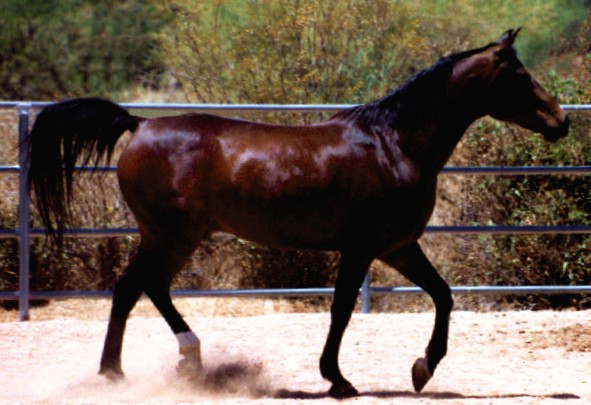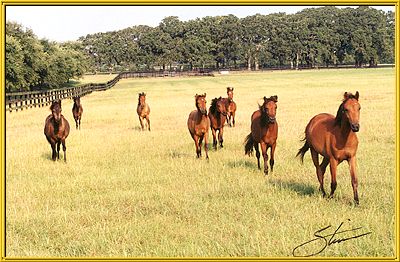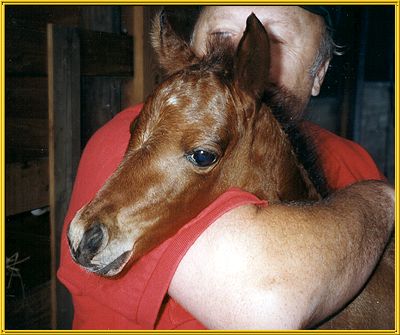bay horses






Bay horses are commonly seen representing many breeds, although only in one breed, the Cleveland Bay, are the horses exclusively of this color. Ranging in shade from golden brown, to reddish brown to almost a deep purpely brown, bays always have dark points, which are black in standard bays but may be a bit lighter in light bays. Along with dun, bay, especially light bay, was probably one of the colors common among ancestral horses.
the genetics of bay horses
The agouti gene controls a switch from normal eumelanin production to a reddish (or sometimes yellowish) form of phaeomelanin in the body of the horse, but not in the mane, tail and points (lower legs and ear rims).
The recessive alleles are Aa and, At. Horses of genotype AaAa have a base color of black, while horses of genotypes AtAt or AtAa have a base color of brown. Brown, including seal brown, is genetically and phenotypically distinct from both black and bay, as explained by Gowers agouti model.
Again according to Gower, bay horses have allele AA, or the wild-type allele A+. It is now the case that (in 2009) 3 alleles have been identified at the molecular level, where previously only 2 were known (the four allele model is certainly a possibility).
Bay horses with allele AA but not A+ are bay, with a black mane, tail and points. Their bodies may be reddish-brown (as in standard, blood and mahogany bays), orange-red (as in copper bays) or yellowish (as in golden bays) and may have a black cast.
Horses with allele A+ are light or wild-type bay. Their points (particularly the lower legs), along with the mane, may be less strongly marked than for other bays (they may be “off-black”). The black on the points may also be more limited than for other bays (e.g. restricted to the fetlocks of the legs). There may be red hairs mixed in with the black portions of the cannon and lower leg, rather than them being solid black.
A summary of the effects of the A series on black is shown below. Some genotypes are shown using an underscore, e.g. AA_. This represents where an allele can either be the same as the allele shown (i.e. AA in the example) or any other allele recessive to it (i.e. either At or Aa in the example, but not A+ which is dominant to AA).
The agouti locus reduces eumelanin production in certain parts of bay and brown horses, probably due to the gene only being operative (“switched-on”) in these parts. Different alleles of the agouti locus are responsible for different forms of phaeomelanin.
|
|






 Bay horses must have at least one E+ allele at the extension locus (i.e. bay horses are of genotype E+E+, E+e or E+ea at this locus). This allele causes the production of the black eumelanin pigment that occurs in black, bay and brown horses, and the colors derived from them (e.g. buckskin). The A or agouti locus controls the distribution of black pigment in horses with at least one E+ allele: whether it occurs evenly throughout the body, as in true black horses, or only in certain parts, as in brown and bay horses.
Bay horses must have at least one E+ allele at the extension locus (i.e. bay horses are of genotype E+E+, E+e or E+ea at this locus). This allele causes the production of the black eumelanin pigment that occurs in black, bay and brown horses, and the colors derived from them (e.g. buckskin). The A or agouti locus controls the distribution of black pigment in horses with at least one E+ allele: whether it occurs evenly throughout the body, as in true black horses, or only in certain parts, as in brown and bay horses. 

